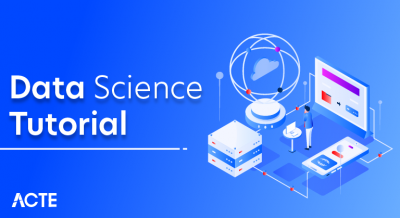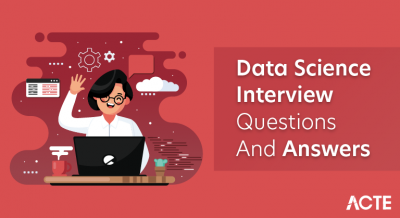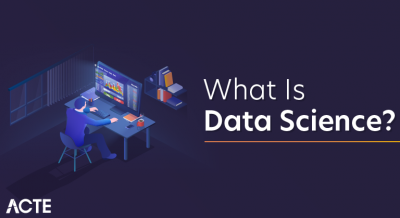
- Introduction to PEAS in AI
- Breaking Down the PEAS Components
- How PEAS Defines an Intelligent Agent
- Examples of PEAS Framework in Real-World AI Applications
- Designing a PEAS Model for an Intelligent Agent
- PEAS in Reinforcement Learning and Other AI Paradigms
- Challenges and Limitations of Using PEAS
- conclusion
Introduction to PEAS in AI
PEAS is a fundamental framework in the field of Data science training and Artificial Intelligence (AI), used to outline the key components that define the functioning of an intelligent agent. It stands for Performance Measure, Environment, Actuators, and Sensors each playing a vital role in the design and analysis of intelligent systems. In this guide, we’ll explore the PEAS framework in depth and see how it applies to AI agents, along with practical examples to enhance understanding.
What is PEAS?PEAS stands for Performance Measure, Environment, Actuators, and Sensors. It is a conceptual framework used in the design and analysis of intelligent agents in AI systems. The PEAS model helps define how an agent operates and interacts with its environment to achieve its goals. By breaking down an intelligent agent’s capabilities into these four components, PEAS allows researchers and practitioners to understand the essential parts of a smart system.
Importance of PEAS in AI SystemsThe PEAS framework is essential in Artificial Intelligence for several reasons:
- It offers a straightforward way to describe and understand the structure of an intelligent agent.
- It helps identify the key elements that drive the behavior of an agent.
- It provides a valuable tool for designing AI systems and evaluating their performance.
- It supports the development of intelligent systems that can adapt to different environments and tasks.
Breaking Down the PEAS Components
The PEAS framework has four main components: Performance Measurement, Environment, Actuators, and Sensors. Let’s explore each in detail.
Performance Measure (P)In the context of Artificial Intelligence and Machine Learning, the performance measure sets the standard for assessing how effectively a model or agent reaches its intended objectives. It offers a quantitative framework to evaluate the success of the system’s decisions or actions. Depending on the specific application, this assessment may consider factors like accuracy, speed, or overall efficiency.
- Example: In a game-playing AI, the performance measure could be the number of wins or the total score.
- Example: The performance measures for a self-driving car could include safety, fuel efficiency, and adherence to traffic laws. Environment (E)
- Example: For a robot vacuum cleaner, the environment is the home with its rooms, furniture, and dirt on the floor.
- Example: In a game, the environment could be the virtual world, including terrain, objects, and other players. Actuators (A)
- Example: In a drone, the actuators could include the propellers that control movement in the air.
- Example: In a game-playing AI, the actuators could be the keyboard or mouse inputs used to move the character. Sensors (S)
- Example: Sensors in a self-driving car include cameras, radar, and LIDAR systems that help detect other vehicles, pedestrians, and road signs.
- Example: Sensors for a robot might consist of touch sensors, vision systems, and sound detection capabilities.
- Performance Measure: Safety, speed, fuel efficiency, adherence to traffic laws
- Environment: Roads, traffic, pedestrians, and weather conditions.
- Actuators: Steering wheel, brakes, accelerator, and turn signals.
- Sensors: Cameras, LIDAR, radar, and GPS. Example 2: Smart Home Systems
- Performance Measure: Energy efficiency, user comfort, security.
- Environment: Home with various rooms, furniture, and appliances.
- Actuators: Thermostats, lights, door locks, and smart speakers.
- Sensors: Motion detectors, temperature sensors, cameras, and microphones. Example 3: Industrial Robotics
- Performance Measure: Precision, speed, and quality of production.
- Environment: Manufacturing floor, machinery, conveyor belts.
- Actuators: Robotic arms, tools, conveyor belt motors.
- Sensors: Cameras, proximity sensors, and force sensors.
- Identify the task the agent is supposed to perform (e.g., cleaning, driving, playing a game).
- Define the performance measure to evaluate the agent’s success in completing the task.
- Describe the environment in which the agent operates, considering all relevant elements and interactions.
- Specify the actuators that the agent will use to act upon the environment.
- Identify the sensors needed to perceive the environment and gather information for decision-making. Factors to Consider in Each Component
- Performance Measure: What outcome do you want the agent to optimize? Consider both short-term and long-term goals.
- Environment: How dynamic is the environment? Are there other agents or unpredictable factors that the agent must contend with?
- Actuators: How do the actuators interact with the environment? What physical or virtual actions are necessary?
- Sensors: What information does the agent need to make decisions? How can the sensors gather accurate data in real time?
- Performance Measure: Rewards or penalties based on the agent’s actions.
- Environment: The simulation or real-world setting where the agent interacts and learns.
- Actuators: The actions the agent can take to affect the environment.
- Sensors: Feedback (state) the agent uses to update its strategy. How PEAS Integrates with Other AI Models
- Ambiguities in Defining the Environment: Some environments are complex to model accurately, especially if they involve highly unpredictable or complex scenarios.
- Complexity in Identifying Performance Metrics: : In some cases, defining a precise performance measure may be challenging, especially when the task is subjective or involves multiple competing goals.
- Limited Scope for Dynamic Systems: The PEAS framework works well for static or relatively predictable environments but may not capture all the complexities of dynamic or real-time systems.
The environment represents everything the agent interacts with and operates in. It can include physical and abstract elements and may consist of other agents, obstacles, or resources the agent needs to manipulate or navigate.
Actuators are the mechanisms that allow the agent to take actions in the environment. Depending on the agent’s nature, actuators could be motors, wheels, or even software-based actions. The actuators are responsible for executing the agent’s decisions.
Sensors are the components that allow the agent to perceive the environment. They provide feedback that the agent can use to make decisions and take action. Sensors can gather data on physical parameters (e.g., temperature, light, distance) or abstract information (e.g., the status of a game or the location of an object).
How PEAS Defines an Intelligent Agent
What Is an Intelligent Agent?An intelligent agent is a system designed to perceive its environment and take actions to achieve specific goals. To clearly define the scope of such an agent’s capabilities, the PEAS framework is often applied, outlining key components like performance measures, environmental interactions, sensors, and actuators. Understanding these elements is essential in fields like Data science training, where developing smart, goal-oriented systems is a central focus.
The Role of PEAS in Defining Intelligent BehaviorPEAS is crucial because it allows the agent’s behavior to be analyzed in terms of its goals, the tools it uses to gather information, and the actions it takes. By specifying the components of PEAS, AI researchers can systematically design agents that exhibit intelligent behavior under various circumstances. For instance, knowing the performance measure enables you to tailor the agent’s actions to optimize for specific outcomes, while sensors ensure that the agent makes decisions based on the current state of the environment.

Examples of PEAS Framework in Real-World AI Applications
To understand its significance, let’s look at how the PEAS framework is applied in real-world AI systems.
Example 1: Autonomous VehiclesDesigning a PEAS Model for an Intelligent Agent
Steps to Define a PEAS Framework
PEAS in Reinforcement Learning and Other AI Paradigms
PEAS in Reinforcement LearningIn reinforcement learning (RL), an agent learns through continuous interaction with its environment, receiving rewards or penalties based on its actions. This process aligns well with the PEAS framework, as the performance measure corresponds directly with the reward system. The environment is dynamic, and the agent relies on sensors and actuators to gather feedback and respond accordingly. For those looking to dive deeper, this concept is thoroughly explored in our Data science training
The PEAS framework also fits within other AI paradigms, such as supervised learning, planning, and natural language processing. For example, in natural language processing, the performance measure could be the accuracy of the model’s understanding, the environment could be a text corpus, the actuators could be text generation or classification models, and the sensors could be the input features of the text data.
Challenges and Limitations of Using PEAS
While the PEAS framework helps understand intelligent agents, it does have some challenges
Conclusion
The PEAS framework is fundamental in comprehending and designing intelligent agents within the realm of artificial intelligence. By outlining the key components Performance measures, Environment, Actuators, and Sensors it offers a structured and systematic method for building robust AI systems. This framework not only defines intelligent behavior but also ensures agents operate effectively across a variety of environments, allowing researchers to assess their performance meaningfully. As the field of AI vs Data Science




